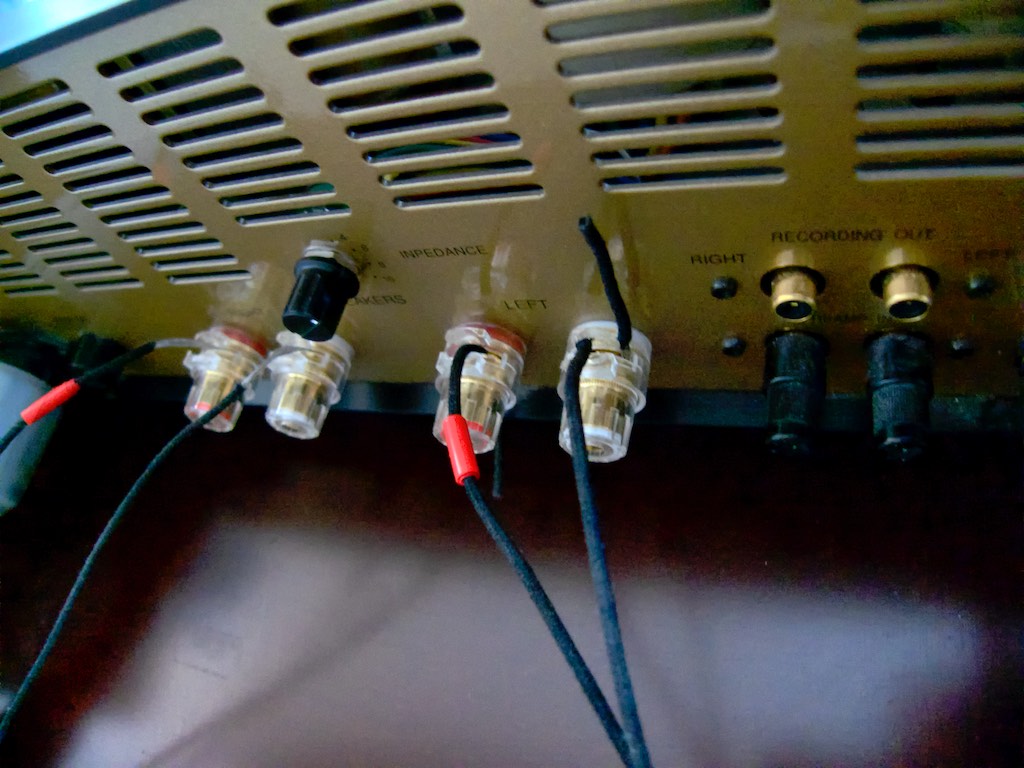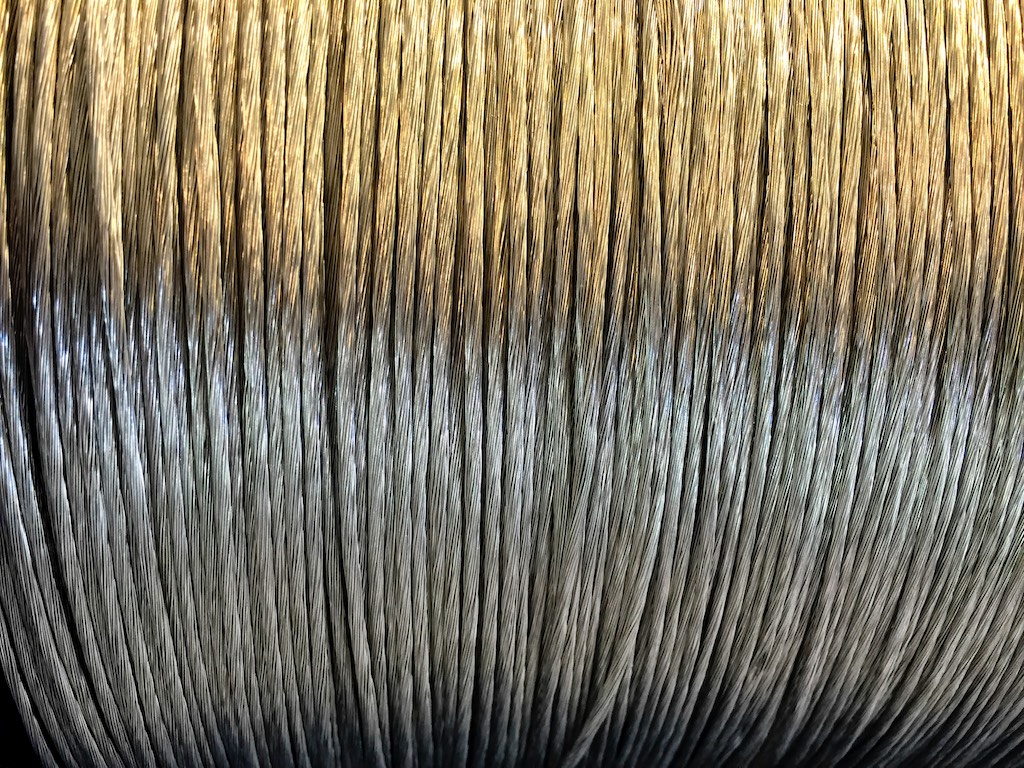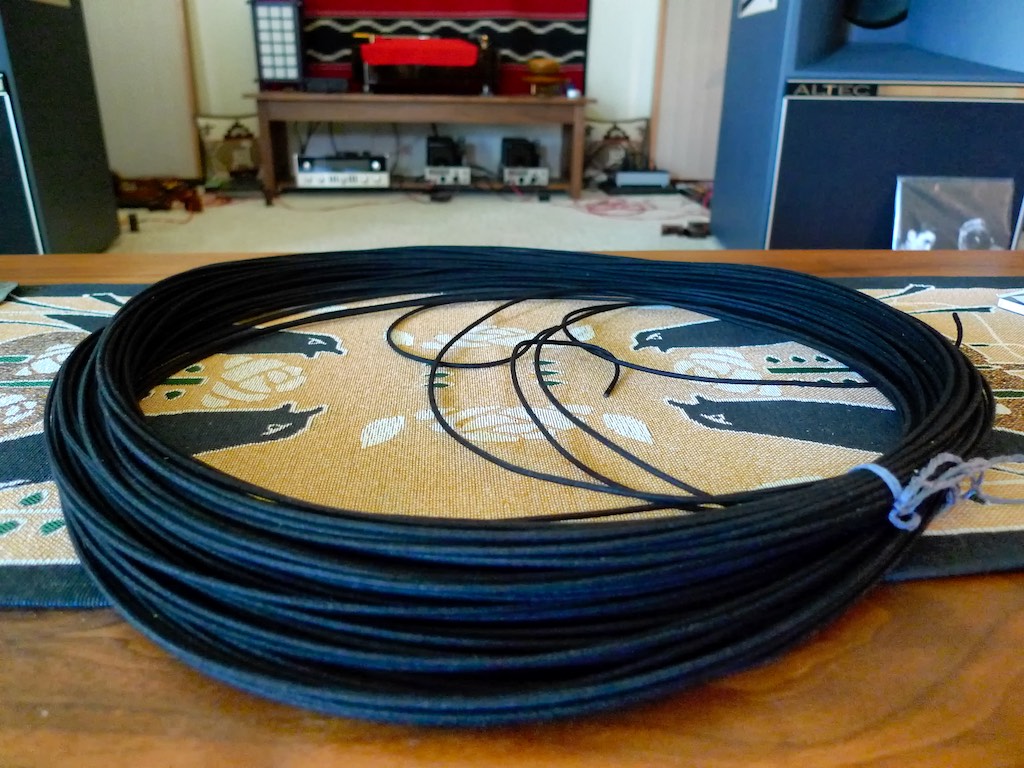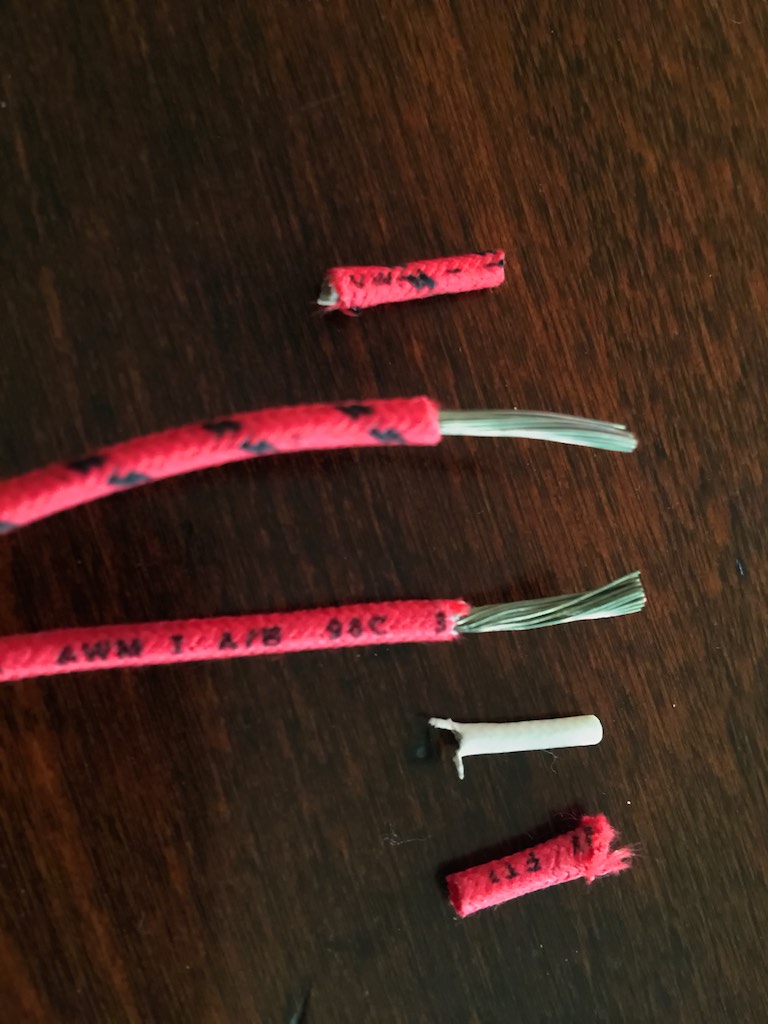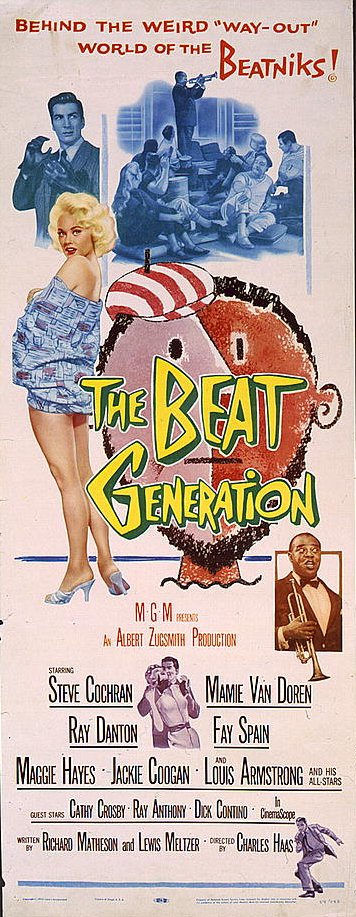Back 10 years ago now when I first tried the combination of the Leben CS600 integrated amplifier (and RS-30EQ phono stage) with my Harbeth Super HL5 loudspeakers, I was so impressed with the immense musicality of their combined performance that I sold the much more expensive reference system I had at the time, and replaced it with the Leben & Harbeth's. I've never regretted it.

The Leben CS600 vacuum tube integrated amplifier from Japan has been my long-term friend, I can't imagine ever parting with it. It has been completely reliable over the long haul.
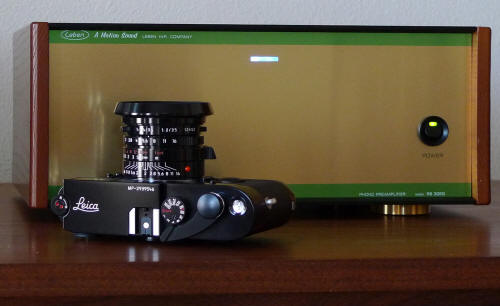
Leben RS-30EQ phono equalizer from Japan posing with my film Leica MP & 35mm Summicron camera/lens from Germany. I sold the MP/'cron combo and have regretted it ever since. Fortunately I didn't make that mistake with the Leben RS-30EQ!
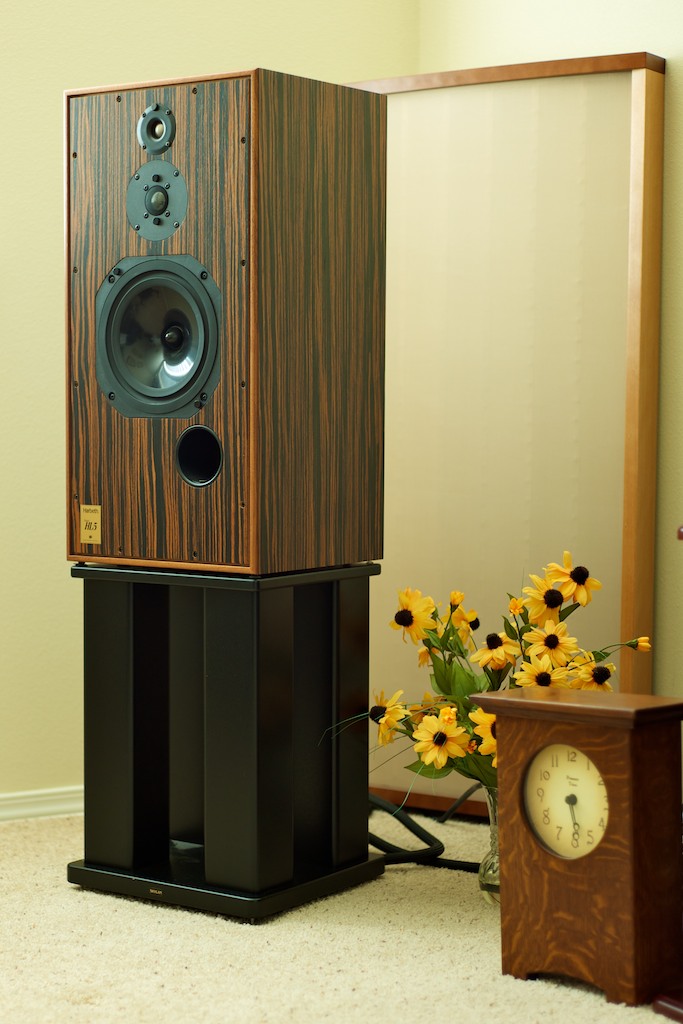
My beloved Harbeth Super HL5 loudspeakers have stood the test of time, and we've just celebrated a 10 year anniversary together! That doesn't happen much with audio writers!
The strength of the Harbeth loudspeakers is their natural, nuanced, and emotive performance in smaller rooms, and to this day Harbeth's remain my favorite small room loudspeakers. It doesn't really matter which Harbeth's you have either, the big Harbeth Monitor 40.1's worked as well in my small 11-feet x 12-feet x 9-feet (ceiling) room as do my Harbeth Super HL5 loudspeakers. In fact, now that I think about it, the big M40.1's even worked better, contrary to what you would expect. I would have kept the M40.1's too, but I had to sell them in order to pay for the mighty Tannoy Westminster Royal SE's I had ordered, and which still remain as my favorite 'big system' reference loudspeakers.
Do Harbeth's have a weakness? Well, of the three pairs I have reviewed and/or owned, I found them not to work so well in my large rooms, like my main living/listening room, which is 27’6’’ long by 20’4’’ wide, and with variable ceiling height from 9 to 20 feet). The bass gets overly boomy and prominent when Harbeth's are placed in a large room, and after a while it gets annoying, but a small room controls their bass output and brings out their considerable best.
Margot from Princeton contacted me a few days ago to ask me some hi-fi questions, including a question about cables that are a good match to Harbeth's (this post is for you, Margot!).
In the past I have had excellent results with both Auditorium 23 cables and Acoustic Revive cables in my Harbeth & Leben system, but I had installed the Duelund DCA16GA wire into the system as speaker cables, along with the Belden 8402 microphone cable as interconnects, and been listening to them for a while when I got Margot's email. The resulting performance with the Belden 8402 & Duelund DCA16GA paired with my Leben & Harbeth duet is absolutely superb!
Like quite a lot of you have experienced, the ridiculously inexpensive Duelund DCA16GA wire & Belden 8402 RCA interconnects provided a much nicer tonal balance for the Harbeth & Leben combination even than the much more expensive aforementioned cables.

Belden 8402 microphone cable RCA interconnects with Switchcraft 3502AAU RCA's, connected Yazaki-san style with the shield connected to ground at both ends.
My Belden 8402 microphone cable interconnects and Duelund DCA16GA wire have some hours on them now, and they're really sounding great on the Harbeth & Leben CS600.
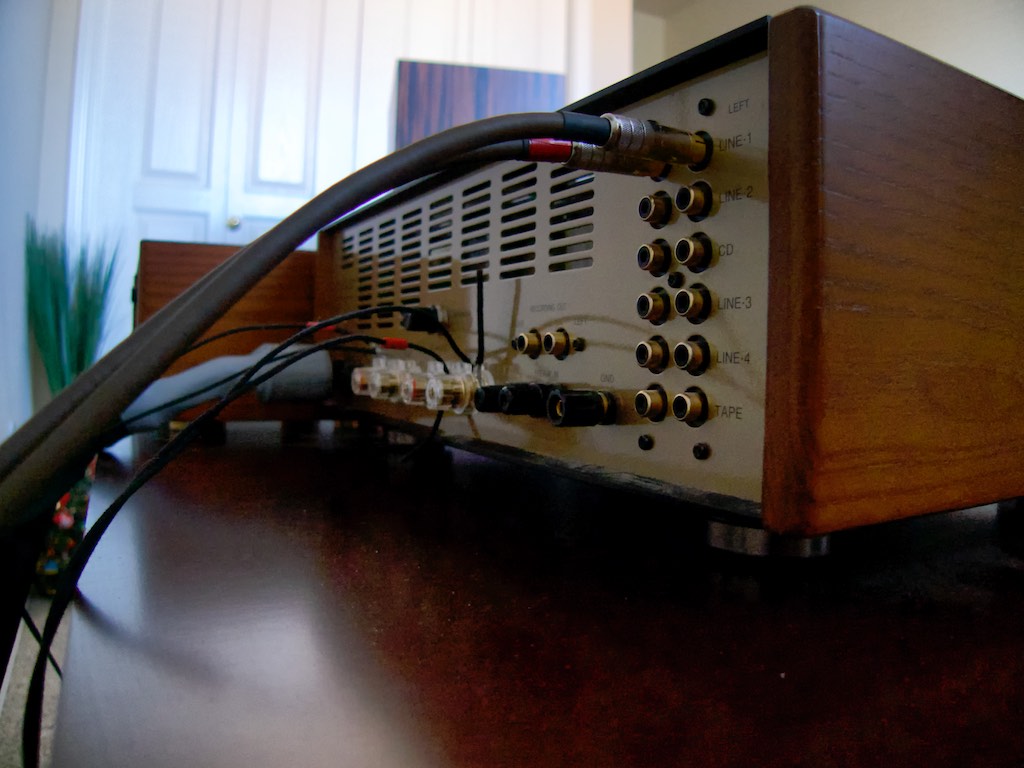
My Leben CS600 with Sablon Audio Robusto power cord (a favorite of mine), Duelund DCA16GA speaker cables, and Belden 8402 microphone cable interconnects.
The Belden 8402 & Duelund DCA16GA combination takes the natural, nuanced, and emotive presentation of the Leben CS600 amplifier and Harbeth Super HL5 loudspeakers to another level of performance, strengthening their already strong performance in those areas. Let's just say that if you own Leben gear or Harbeth's you're definitely going to want to check out this combination. I do mean combination, because if you only run one or the other you'll not hear all of the musical magic they are capable of when paired.
The really, really, nice thing about them is they're very inexpensive, which is a real bonus in this day and age for most of us. With the money you save you can buy more records or good wine! I just bought a pair of 2-meter Belden 8402 interconnects terminated with Switchcraft 3502AAU (gold plug & nickel handle) RCA's from Best-Tronics for the incredibly reasonable price of $89.60, including shipping. That's less than 10% of the price of the spendy RCA interconnects I've been using and have held in high regard.
Here's a couple of secrets regarding the Belden 8402 microphone cable interconnects that I'll pass on to you.
The first is that you definitely want to connect them in Yazaki-san fashion (Best-Tronics does this by default when you order from them - see their web site), with the shield connected to the ground at both ends, rather than just at one end, American-style. With the shield connected at both ends their musicality is top-notch, but if you connect the shield only at one end, they lean out and lose some of their musical magic.
The second hint I'll pass on is the Switchcraft 3502AAU RCA connectors, which first of all are really good sounding RCA's, plus they're inexpensive, and even more importantly, they won't damage the more fragile RCA inputs on vintage gear.
Many of the new 'high-end' connectors have a sized-up center pin & extra stout plug housings/handles so they can connect extra tightly, but they'll damage the more fragile vintage RCA inputs. The Switchcraft's have a relatively narrow housing/handle so they fit the spacing of RCA inputs on vintage gear better (which are closer together than their modern counterparts). Certain 'high-end' RCA's I've tried I can't even use on my vintage McIntosh gear, they're just too big and fat to fit into the available spacing. This is also true for many modern television inputs, which are often spaced tightly.
The Duelund DCA16GA wire is formidable, and more than a match for the legendary Western Electric WE16GA that inspired it. I am more impressed with the Duelund with every passing week, it is incredibly good, and I am very grateful to Frederik for taking on the risk of producing a vintage-style tone cable.
Frederik worked closely with a specialty manufacturer to develop the 26-strand, 0.25mm diameter, tinned-copper conductors for his Duelund DCA16GA cable, and they are essentially the same those in the legendary Western Electric WE16GA.
Rather than the combination of plastic & fabric dielectric used in the Western Electric cable, Frederik followed Steen Duelund’s axiom that natural materials produce more natural sound, so he eschewed the WE16GA’s plastic inner sleeve in favor of a black cotton dielectric that is impregnated in oil, and is then baked to solidify the oil so you don't get an oily feel to it. Frederik's and Steen Duelund's belief that a fully organic nature imbues more natural sound quality, and from what I'm hearing, the organic dielectric of the Duelund DCA16GA has a more natural tone than the use of plastics in the Western Electric WE16GA allow for.
Fortunately, the Duelund DCA16GA has been a big hit for Frederik, and the first production run sold out in just 6 days after I made the first post about it. Orders for the second production run have piled up quickly, and that may be sold out as well by the time you read this, as orders were piling up fast. For those in the Americas, you'll want to check with Parts Connexion for availability, and if necessary get your name on a waiting list for the next batch.
The MSRP retail price for the Duelund DCA16GA is $12.99 USD/meter ($3.97/ft), but Parts Connexion’s pricing was $9.99 USD/meter ($3.33/ft) when I checked their website just now. That’s a great deal for what is essentially a custom, hand-assembled, 16 AWG tin-plated stranded copper wire made to better the legendary Western Electric WE16GA, with an oil impregnated cotton jacket as a bonus.
The Duelund DCA16GA is a single run of wire, so if you want to make a 3-meter set of speaker cables, like I did for my Harbeth Super HL5's, you would need to order 12-meters of Duelund DCA16GA. That would give you enough for 3-meter +/- runs for both speakers. The cost would be $119.88 for a 3-meter pair of speaker cables, which is an incredible price for this level performance. I've had readers tell me they've replaced $10K pairs of speaker cables (and equally spendy interconnects) with the Duelund/Belden combo, and it was better in every way, and I don't doubt it given the results I'm hearing.
Here's an important tip about the Duelund DCA16GA (just as with the WE16GA before it): don't terminate it when using it as speaker cables, but rather just trim off a little of the dielectric at the end and connect it using the bare wire. Adding spade or banana connectors seriously degrades their performance, so just go with the bare wire.
Just in! I want to alert you to a great read about 'Beatnik' Jack Roberts' first experiences with the Duelund DCA16GA cable and the Belden 8402 microphone cable interconnects. It's great to get some feedback from such a respected audio writer as Jack Roberts, who is incidentally one of my favorite audio writers, and Jack talked about some insights that had not yet occurred to me. You can read about Jack's experiences here. From one beatnik to another, may the beat & tone be with you, Jack!
After reading Jack's excellent article, it made me realize that in the future I should explain a little more about what I refer to as 'vintage tone', or what Yazaki-san calls 'real sound', two interrelated concepts which Jack does a fantastic job of introducing, by the way.
I've been doing this 'vintage tone' thing for a while now, so sometimes I forget to describe it in context to the usual audiophile 'sonic' paradigm for those of you who are new to it, or perhaps haven't experienced it yet.
Anyways, at this point I think I'm going to recommend to Margo, and to all of you, to go read Jack's post, for Jack has some great insights and does an eloquent job of describing them.
Then after you've done that, get enough Duelund DCA16GA ordered to make a pair of speaker cables out of, then order up enough Belden 8402 microphone cable interconnects to outfit your system.
Then be patient until you get about a 100 hours of time on them. That will tell you more about 'real sound' and 'vintage tone' than I could ever relay to you using mere words.
Then write me and tell me what happened to you.
In the meantime let me just say it will be worth your effort and modest investment, and I will be working on telling you more about audio making a turn back towards real musicality that many of us have been pining for. It should be a fun adventure!
Thanks for stopping by!







